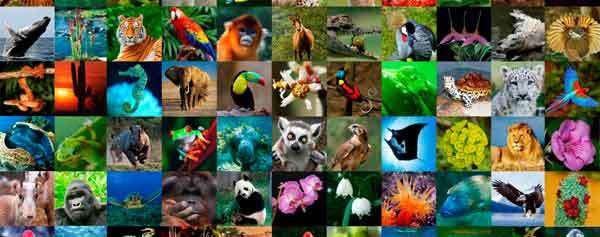
World Wildlife Day
World Wildlife Day
On 20 December 2013, at its 68th session, the United Nations General Assembly (UNGA) proclaimed 3 March – the day of signature of the Convention on International Trade in Endangered Species of Wild Fauna and Flora (CITES) in 1973 – as UN World Wildlife Day to celebrate and raise awareness of the world’s wild animals and plants. World Wildlife Day has now become the most important global annual event dedicated to wildlife.
World Wildlife Day will be celebrated in 2020 under the theme “Sustaining all Life on Earth”, encompassing all wild animal and plant species as key components of the world’s biodiversity.
Earth is home to countless species of fauna and flora – too many to even attempt counting. This rich diversity, and the billions of years during which its myriad elements have interacted, are precisely what has made our planet inhabitable for all living creatures, including humans. Historically, we have depended on the constant interplay and interlinkages between all elements of the biosphere for all our needs: the air we breathe, the food we eat, the energy we use, and the materials we need for all purposes.
However, unsustainable human activities and overexploitation of the species and natural resources that make up the habitats and ecosystems of all wildlife are imperiling the world’s biodiversity. Nearly a quarter of all species are presently at risk of going extinct in the coming decades, and their demise would only speed up the disappearance of countless others, putting us in danger as well. World Wildlife Day
Destruction of animal habitats due to changes in rangelands and forests to agricultural land and residential areas as population growth, mining, environmental pollution due to the use of fertilizers and pesticides, drying up of rivers and wetlands, drought, species alien species and diseases can cause great harm to all animals, including mammals, birds, rodents, and so on.
For this reason, many countries, including Iran, have laws to protect their wildlife. The genome of any living organism has specific inheritance information that has been formed in nature for hundreds of millions of years, and by destroying it, all the information about the ecosystem in which it lives is being destroyed.
Due to its geographical range and topographical features, as well as its climatic diversity between the three zoological zones of India, Europe, and Africa, Iran has unique wildlife, some of which are nowhere to be found, and unfortunately, some of these species are at risk of extinction. The Most Interesting Bird Species in Iran
https://www.wildlifeday.org/
